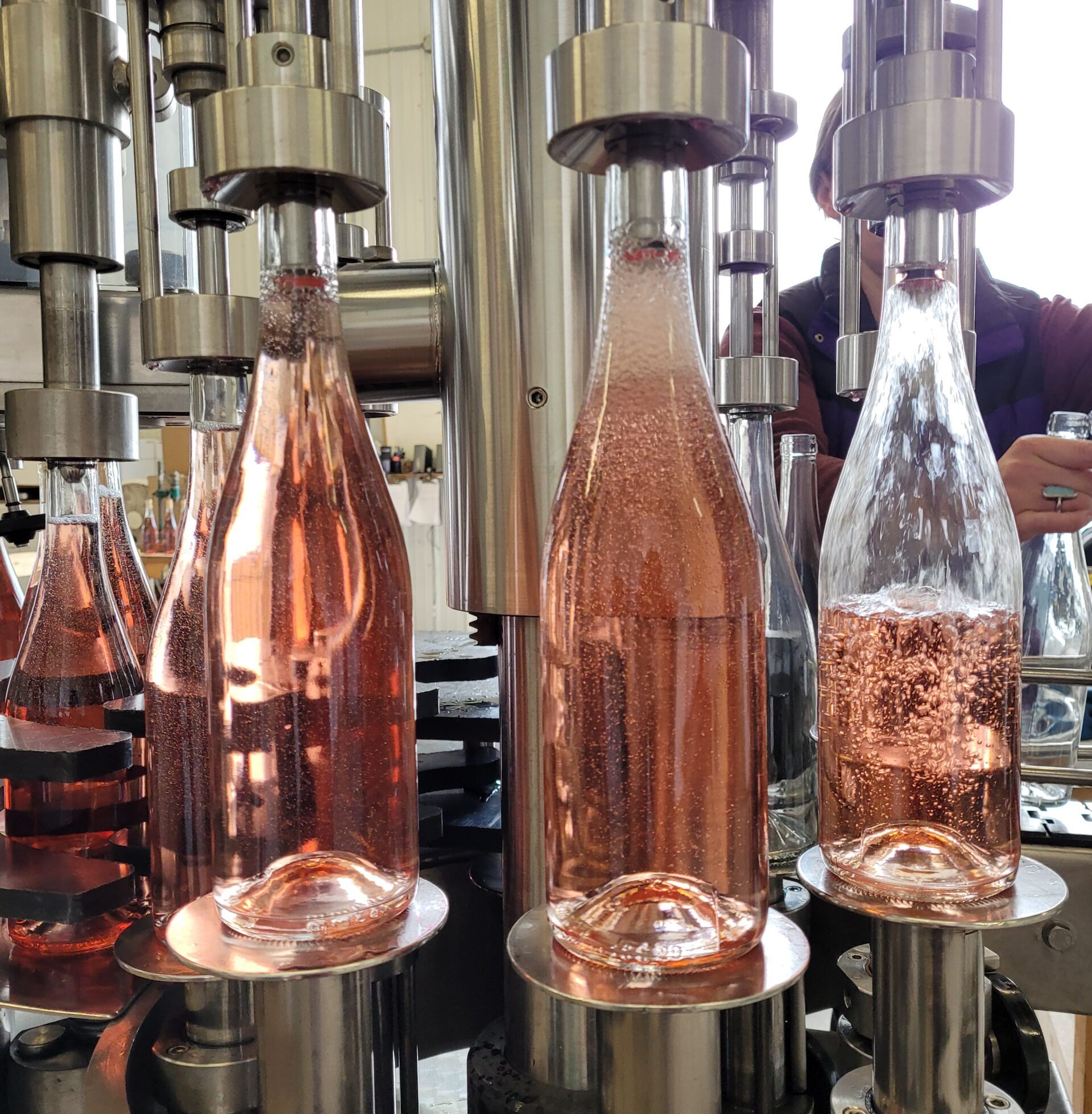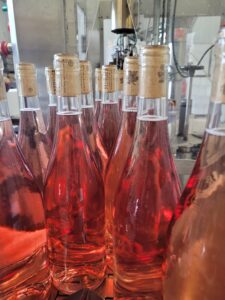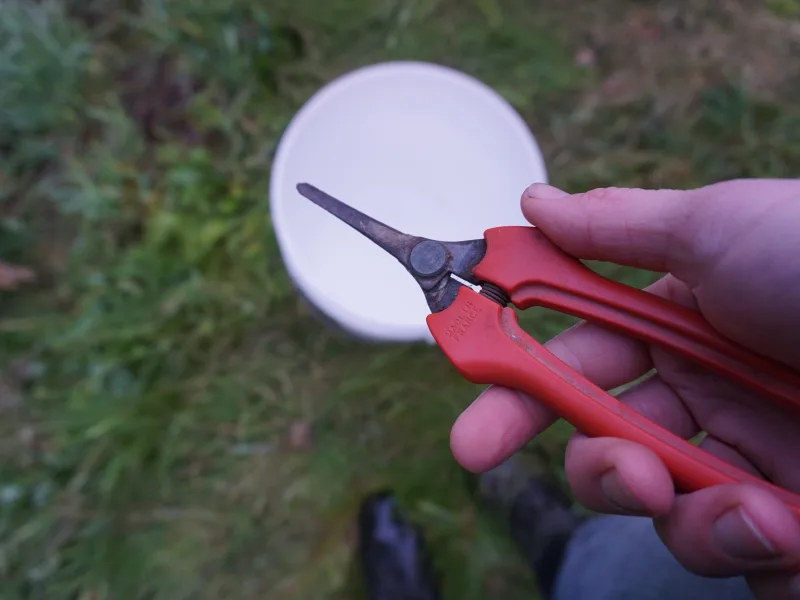
Behind the Bottle: 2021 Dry Rosé of Lemberger
Our assistant winemaker, Emily Grazier, writes on her experience in the making of our 2021 Dry Rosé of Lemberger:
“The 2021 Lemberger rosé is the first wine I’ve worked on for its entire life cycle. While I’ve worked several harvests before, my time at those wineries has usually started with some fruit sampling, and ended around the time wines have finished fermenting and are sitting in tank, awaiting lab work, blending trials, filtration, and bottling. I had never experienced the entire cycle of winemaking from start to finish. For this wine, I got to see most steps occur, from budbreak to bottle.
Lemberger is a beautiful grape variety, originally from Austria (where it is known as Blaufränkisch) with relatively large and loose clusters and berry size. The grapes are usually a rich dark color, which belies the lovely salmon tone of this rosé.
The fruit came in during late October, right in the middle of a wet and challenging harvest. The team really pulled together to ensure fruit came in during the best possible conditions. We cold-soaked the Lemberger allotted to the rosé for two days, allowing the wine to pick up more color and texture than from a direct pressing. After the juice was clarified, I inoculated it with a yeast strain named BA11, discovered in Portugal. (Inoculation — initiating fermentation by adding yeast to the pressed juice — is one of my absolute favorite harvest tasks.) The yeast comes in the same granules you find in a package of commercial bread yeast, but becomes rich, foamy, and creamy like cake batter when it’s added to water. It smells incredible; much richer and with a range of fruit notes not found in bread yeast. You then feed this culture with small amounts of juice for a few hours to let the yeast adjust to the pH and temperature. When you’re inoculating a rosé, the foam the yeast makes is strawberry-milk pink.
Once it was inoculated, the Lemberger juice went through a slow and cool fermentation process lasting almost four weeks. As is general practice, the finished wine was then pumped off the fermentation lees — the solids that have settled out of the wine during and after fermentation, such as spent yeast cells. At this point, the wine is tested to check the alcohol levels, acidity, etc., and is filtered before being bottled. Bottling usually takes a large team of people to get done, but the Lemberger rosé is such a limited project that Julia and I bottled it by ourselves. It’s strange to think, but I placed each and every bottle of this rosé in its case.

The Lemberger rosé has always felt like the baby sister of the much larger lot of Cabernet Franc rosé – a lighter color, more delicate aromatics, more textural, when compared to the bolder and juicier fruit of the Cabernet Franc. I can’t say I prefer either wine to the other, just that they each stand on their own merits. While my role in the Lemberger rosé was admittedly a small one within a larger team, I’m thrilled to have had a hand in putting it out into the world, and I’m very excited for the future 2021 releases! “


